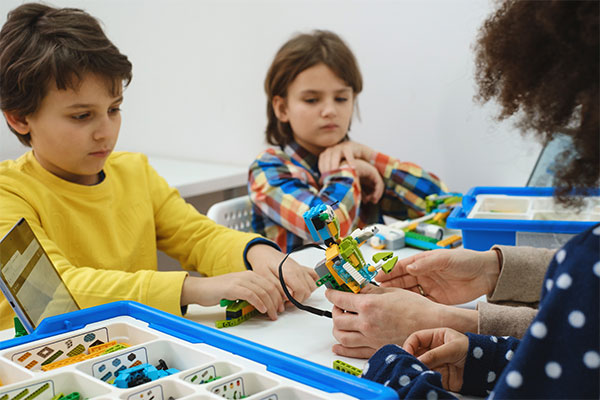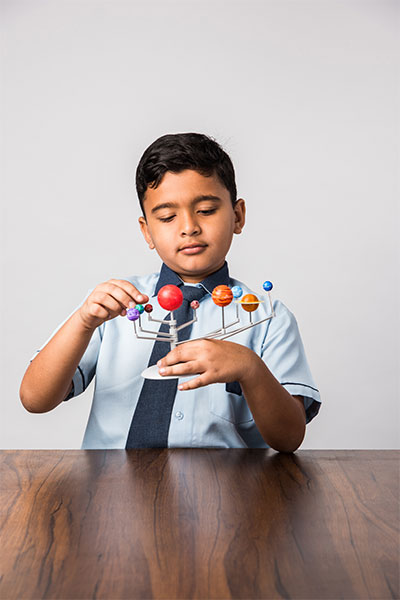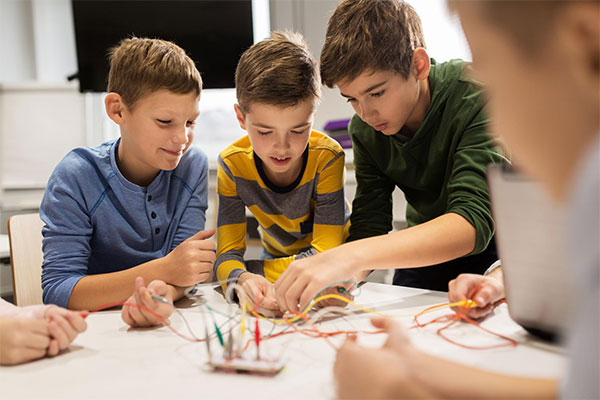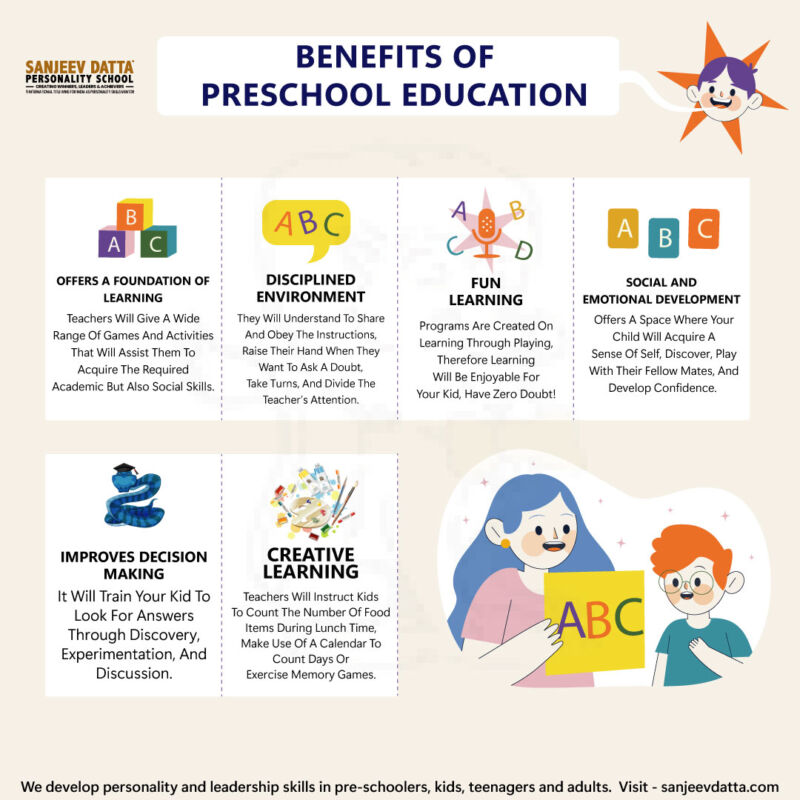In today’s dynamic world, the ability to work together, think critically, and solve problems as a team is more important than ever. Collaborative problem solving for kids is a vital skill that not only prepares children for academic success but also lays the foundation for lifelong social and emotional growth. When children learn to engage in thoughtful discussion, consider multiple perspectives, and work cooperatively to overcome challenges, they develop the resilience, creativity, and empathy needed to thrive in all aspects of life.
This comprehensive guide explores the process of collaborative problem solving, detailing effective strategies and interactive activities that parents, educators, and caregivers can use to nurture these skills in children. Drawing from the latest research in child development and education, this article offers a step-by-step approach to fostering teamwork and critical thinking among young learners. Along the way, you’ll find practical tips, engaging exercises, and real-life examples that illustrate the transformative power of collaborative problem solving for kids.
Introduction
Imagine a classroom where every child not only excels academically but also collaborates seamlessly with peers to solve challenging puzzles, tackle group projects, and navigate everyday conflicts. In such an environment, children aren’t just learning facts and figures; they are developing the essential skill of working together to overcome obstacles. This is the essence of collaborative problem solving for kids.
This guide is designed to help you understand the critical importance of collaborative problem solving and provide you with actionable strategies to embed this skill into your child’s daily routine. Whether you’re a parent, teacher, or caregiver, you will find valuable insights and interactive exercises to support your child’s growth and help them build a strong foundation for future success.

Why Collaborative Problem Solving Matters?

1. Enhances Critical Thinking and Creativity
Collaborative problem solving encourages children to think critically and creatively. When kids are given the opportunity to work in groups, they learn to analyze problems from various angles and develop innovative solutions. This process enhances their ability to think outside the box and fosters a mindset that welcomes challenges as opportunities for growth.
2. Fosters Effective Communication Skills
Effective communication is the backbone of any successful team effort. Through collaborative problem solving, children learn to articulate their thoughts, listen actively, and respect differing viewpoints. These communication skills are not only essential for academic success but are also crucial for building positive relationships throughout life.
3. Builds Social and Emotional Competence
Working together on a problem requires children to understand and manage their own emotions while empathizing with others. This shared experience of overcoming obstacles builds trust, promotes empathy, and helps children develop stronger interpersonal relationships. It also lays the groundwork for emotional resilience, as children learn that failure is part of the learning process.
4. Develops Teamwork and Leadership Abilities
In a collaborative setting, every child has the opportunity to take on various roles—whether as a leader, a facilitator, or a supportive team member. These experiences help children learn the value of teamwork, understand the importance of each role within a group, and build leadership skills that will serve them well in future endeavors.
5. Prepares Kids for Real-World Challenges
The skills developed through collaborative problem solving are directly transferable to real-world scenarios. Whether it’s solving complex problems in school, navigating social conflicts, or working in professional environments, children who have honed these skills are better equipped to handle the demands of an ever-changing world.
Visit: social competence for kids
The Collaborative Problem Solving Process
The process of collaborative problem solving can be broken down into several key steps. Each step is designed to help children systematically approach challenges and work together to develop solutions.
Step 1: Identifying the Problem
The first step is recognizing that there is a problem that needs solving. Children should be encouraged to observe their surroundings and identify challenges in their environment—whether it’s a disagreement with a friend, a tricky homework assignment, or a malfunctioning toy.
Interactive Exercise:
Ask your child to describe a situation where they encountered a problem recently. What was the issue, and why did it need to be solved? Writing down their thoughts in a “problem journal” can help them reflect on these experiences.
Step 2: Gathering Information
Once the problem is identified, the next step is to gather all relevant information. This involves asking questions, discussing the problem with peers, and understanding the context fully.
Discussion Prompt:
Encourage your child to list what they already know about the problem and what additional information might be needed. This can be done as a group discussion in the classroom or at home.
Step 3: Brainstorming Possible Solutions
The brainstorming phase is where creativity takes center stage. Children should be encouraged to think of as many solutions as possible, no matter how unconventional they may seem. The goal is to generate a wide range of ideas without judgment.
Group Activity:
Organize a brainstorming session with a small group of children. Use a whiteboard to jot down all ideas, emphasizing that there are no wrong answers. Later, discuss each idea and explore its feasibility. Unlock your child’s full potential through our expert-led personality development classes—enroll now and empower them to master collaborative problem solving and transform challenges into opportunities!

Step 4: Evaluating the Options
After brainstorming, it’s important to evaluate the potential solutions. Children should consider the pros and cons of each option and think about the likely outcomes.
Interactive Tool:
Create a simple decision matrix where children can score each idea based on criteria such as feasibility, cost, and potential success. This not only makes the evaluation process fun but also teaches them a structured approach to decision making.
Step 5: Choosing the Best Solution
With the options evaluated, the group must then decide on the best solution to implement. This step involves consensus-building and may require negotiation and compromise.
Role-Playing Exercise:
Simulate a situation where each child explains why they believe their idea is the best. Encourage active listening and respectful debate, culminating in a group vote to select the most viable solution.
Step 6: Implementing the Solution
Once a solution is chosen, the next step is putting it into action. Children learn the importance of planning and teamwork as they work together to execute the plan.
Project Plan:
Create a step-by-step action plan with clear roles and responsibilities for each group member. Encourage children to set small goals and track their progress.
Step 7: Reflecting on the Outcome
The final step is reflection. After the solution has been implemented, children need to discuss what went well, what could have been improved, and what they learned from the experience.
Reflection Discussion:
Ask questions like, “What did you enjoy about working together?” and “What would you do differently next time?” This reflection reinforces learning and helps solidify the skills acquired during the process.
Visit: learning styles in children
Practical Tips and Strategies for Enhancing Collaborative Problem Solving
- Encourage Open Communication
Open and honest communication is the key to effective collaboration. Teach children to express their ideas clearly and listen actively to others. Reinforce the importance of asking questions and seeking clarification when needed.
Tip: Use “I” statements to help children express their feelings and opinions without sounding accusatory. For example, “I feel…” or “I think…” encourages respectful dialogue.
2. Create a Safe and Supportive Environment
Children are more likely to participate in collaborative activities when they feel safe and supported. Establish ground rules that promote respect, empathy, and inclusivity.
Tip: Start each session with a brief discussion on the importance of respecting others’ opinions and the value of teamwork. Celebrate small victories and provide constructive feedback throughout the process.
3. Use Interactive and Engaging Tools
Incorporate games, puzzles, and digital tools to make collaborative problem solving engaging and fun. Interactive activities not only stimulate creativity but also encourage children to apply their skills in real-world scenarios.
Tip: Integrate apps and online games that focus on team challenges and strategic thinking. These tools can provide instant feedback and foster a competitive yet cooperative spirit.
4. Involve Parents and Educators
Collaboration between parents, educators, and children reinforces the importance of teamwork and problem solving. Encourage joint activities at home and in the classroom to build a community of learners.
Tip: Organize family game nights or classroom group projects that focus on solving a common problem. This not only enhances social skills but also builds stronger bonds between children and adults.
5. Encourage Reflective Practices
Reflection is a critical part of the learning process. Encourage children to regularly reflect on their experiences, either through journals, group discussions, or creative projects. This habit helps them internalize lessons and continuously improve their problem-solving abilities.
Tip: Create a “reflection corner” in the classroom or at home where children can share their thoughts and insights about recent collaborative activities.

Real-Life Examples of Collaborative Problem Solving
Example 1: The Classroom Project
Imagine a group of fourth-graders tasked with creating a model of their dream community. Each child brings different ideas to the table—some suggest parks, others propose libraries, and a few envision modern transportation systems. Through a collaborative problem-solving process, the group brainstorms, evaluates, and finally combines their ideas into a cohesive project. Not only does this activity enhance their creative and critical thinking skills, but it also teaches them the value of cooperation and shared responsibility.
Example 2: Resolving a Playground Dispute
In another scenario, a playground dispute arises over the use of limited sports equipment. Instead of resorting to conflict, a group of children decides to work together to find a solution. They hold a meeting, listen to everyone’s concerns, and brainstorm ways to share the equipment fairly. They agree to create a schedule that allocates time slots for different games. This practical application of collaborative problem solving for kids not only resolves the conflict peacefully but also builds trust and camaraderie among peers.

Interactive Exercises to Foster Collaborative Problem Solving
Exercise 1: The Team Challenge
Objective: Enhance teamwork and strategic thinking.
Instructions:
Divide children into small groups.
Present them with a challenge, such as building the tallest tower using limited materials (e.g., straws, tape, and paper).
Give them a set time to plan, collaborate, and build their tower.
After the challenge, discuss the strategies used and reflect on what worked and what didn’t.
Outcome: This activity encourages children to brainstorm collectively, delegate tasks, and adapt their strategies in real time. Set your child on a path to success with our dynamic training for personality development for kids—designed to nurture teamwork, resilience, and creative thinking. Join us today and watch your child thrive in every situation!
Exercise 2: The Puzzle Relay
Objective: Promote active listening, communication, and quick thinking.
Instructions:
Create a series of puzzles or riddles that require group input to solve.
Each team member is responsible for solving one part of the puzzle before passing it on.
Encourage teams to discuss and plan their approach collectively.
Outcome:
Children learn the importance of each team member’s contribution and the power of collaborative effort in solving complex problems.
Exercise 3: Scenario Role-Play
Objective: Practice conflict resolution and empathy.
Instructions:
Present children with a scenario that involves a minor conflict or a decision-making challenge.
Assign different roles to each child (e.g., mediator, problem-solver, observer).
Let them act out the scenario and then discuss the outcomes as a group.
Outcome:
Role-playing helps children experience different perspectives, build empathy, and develop effective strategies for conflict resolution.
Exercise 4: Group Story Building
Objective: Boost creativity and flexible thinking.
Instructions:
Begin a story with an intriguing opening line.
Each child contributes a sentence to continue the story.
Periodically, introduce a twist that requires the group to rethink the direction of the story.
At the end, discuss how the twists changed the narrative and what new ideas emerged.
Outcome:
This exercise promotes active listening, adaptability, and the ability to integrate multiple viewpoints into a cohesive narrative.
Visit: habit stacking for personal growth
Integrating Collaborative Problem Solving into Daily Life
At Home
Encourage collaborative problem solving as a regular part of family life. Involve your children in decision-making processes, such as planning a family outing, preparing a meal, or organizing a game night. These everyday activities provide ample opportunities to practice teamwork and communication in a supportive environment.
In the Classroom
Educators can integrate collaborative problem solving into the curriculum through group projects, team-based learning activities, and classroom discussions. Creating an environment where children feel comfortable sharing ideas and working together fosters a culture of cooperation and mutual respect.
In the Community
Community centers, sports teams, and extracurricular clubs are ideal settings for collaborative problem solving. These environments allow children to interact with peers outside their usual circles, broadening their perspectives and enhancing their social skills.
Conclusion
In conclusion, the journey toward mastering collaborative problem solving for kids is an enriching one that cultivates essential life skills such as critical thinking, effective communication, empathy, and adaptability. By incorporating interactive activities, reflective exercises, and real-world applications into daily routines, we equip children with the tools they need to navigate an ever-changing world with confidence and creativity.
The benefits of fostering collaborative problem solving extend far beyond academic performance—they shape resilient, innovative, and socially adept individuals ready to face life’s challenges head-on. Whether at home, in the classroom, or within the community, every opportunity to practice these skills contributes to building a brighter future for our children.
As parents, educators, and community leaders, our role is to create environments that nurture these abilities and celebrate the power of working together. Embrace the strategies and activities outlined in this guide, and witness firsthand the transformative impact of collaborative problem solving for kids on your child’s development.
Empower your child to think critically, communicate effectively, and solve problems collaboratively. With each challenge they overcome, they build a foundation for lifelong success. Let’s work together to inspire a generation of adaptable, creative, and confident young individuals ready to make a positive impact on the world.
Happy collaborating, and here’s to a future where every child thrives through the power of teamwork and creative problem solving!


